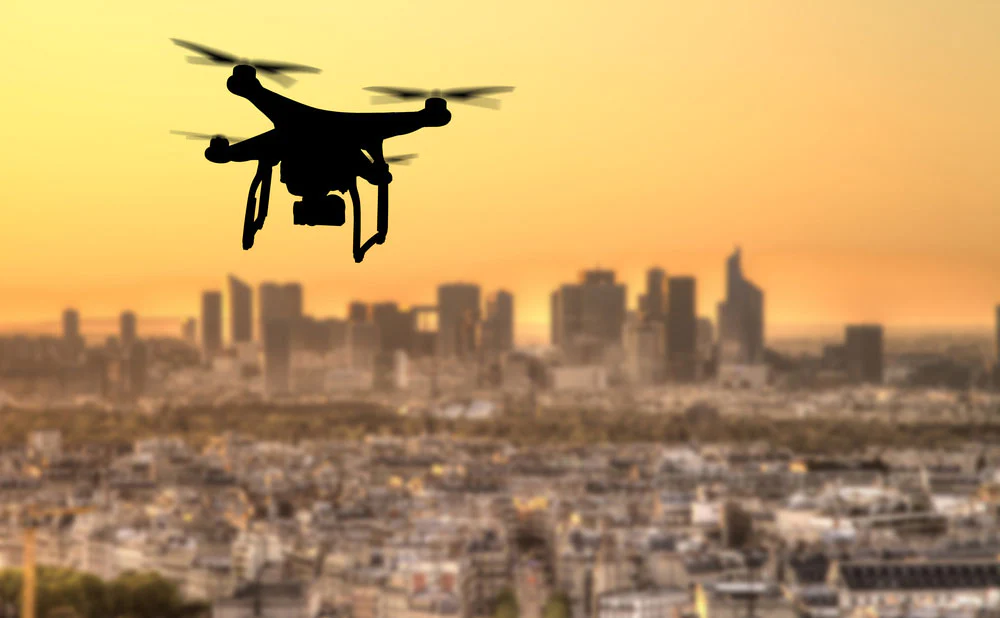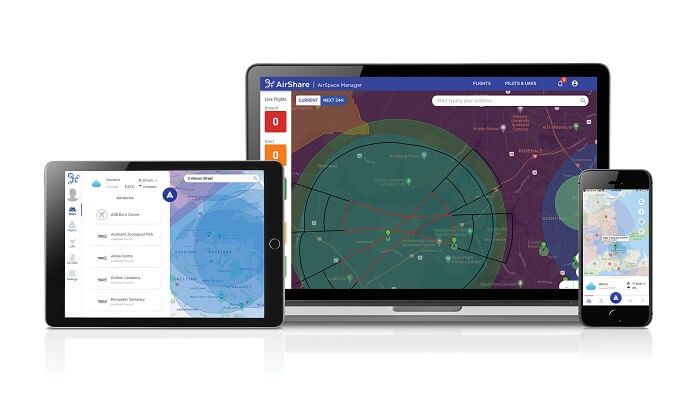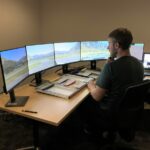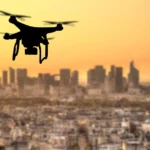UTM for Airspace Managers: Data, efficiency, evolution
George Ridd, Airways’ Product Manager AirShare, explains how new systems and processes are required to protect airspace and ground safety, while being highly scalable to meet future growth.

George Ridd
Product Manager, AirShare
Air traffic control and other airspace managers are grappling with increasing numbers of uncrewed aircraft (UA) requesting access to their airspace.
With UA often having very different capabilities and performance characteristics than traditional crewed aircraft, legacy air traffic management systems are unlikely to be fit for purpose for managing UA in the future.
This changing air traffic mix requires new systems and processes to protect airspace and ground safety while being highly scalable to meet future growth. Key considerations for the management of UA traffic include:
How do airspace managers have access to the information they require to assess the intentions of the UA to make an informed decision about providing authorisation to operate?
How will an airspace manager maintain situational awareness of UA traffic in the airspace so they can maintain safety for all airspace users?
What is needed to support the rapidly advancing and evolving UA industry to deliver the potential benefits of UA?
Accurate, real-time data is key
“We’re entering a new world in which data may be more important than software.”
Tim O’Reilly
Founder, O’Reilly Media
The safe and effective management of UA in airspace is highly dependent on the available data to make decisions. How do airspace managers know whether a UA and the operator have the qualifications, experience and certifications to fly a proposed mission? How will the real-time risk of a UA operation to both air and ground users be understood throughout its flight? How is human cognitive load managed in airspaces where UA may significantly outnumber manned aircraft?
Being able to gather, process and present accurate and relevant data to airspace managers is critical to answering these questions. By aggregating data from multiple sources into a UTM platform, a single source of the truth for airspace data becomes possible and new, innovative services for all stakeholders can be built based on that information.
Take a service such as an open-access traffic information Application Programming Interface (API), where any airspace users can integrate their own system to receive the positions of planned and live air traffic. This gives access to data that can be utilised to enhance safety and operational efficiency outcomes through increased situational awareness of the airspace. A UTM solution that can receive live positions of air traffic from a range of sensors and UA tracking infrastructure, repackage that data into relevant information for airspace users, and provide that information in near real-time is central to delivering a traffic information service.
UA detection infrastructure promises to provide data to assess potential threats to other airspace users and to ground based assets. However, how does an airspace manager really know which UAs are authorised to operate and which are truly non-cooperative? By aggregating the data from UA detection systems, live positions and known flight plans, a capable UTM solution such as AirShare, Airways’ UTM solution, can process this data and alert the airspace manager in real time which UA detections are truly unauthorised or operating in an off-nominal state.
Having the flexibility to add new value-add data sources when they emerge and realise the benefits of that data should be key when procuring a UTM solution. Scalability of UA operations in any given airspace will be driven by automation, which in turn is underpinned by having the best data available for the UTM solution to make safe, efficient, predictable and fair operational decisions.

Enabling efficient work processes
In a future airspace where UAs are performing operations from inspections, deliveries, passenger transport and agricultural work, the volume of UA air traffic may exceed crewed traffic by a significant margin. The cognitive load to manage this traffic increases exponentially as the number of simultaneous airborne craft increases, and this is compounded when considering the wider range of performance characteristics.
Traditional ATC processes and systems are unlikely to be able to scale to accommodate the needs of all future airspace users. Airspace managers looking for a solution to efficiently manage an increasing complex airspace could consider a UTM solution with the following features:
Automation of decisions for requests to access airspace based on a calculated risk assessment taking into account, for example, the location or route of the operation, the capability of the UA, the pilot qualification and any contemporaneous air or ground information available to the UTM solution such as traffic, weather and first responder operations.
Digitisation of final clearances at launch time, automated in low-risk areas, so that airspace managers know exactly when a UA is entering the airspace. Similarly, digital notifications of UA landing lets the airspace manager know when the traffic is clear of the airspace. This increases situational awareness by providing clarity of exactly when the UA craft is operating.
Automated detections and notifications to airspace managers of airspace conflicts, non-cooperative UAs or other emergency situations. Any alerts should be assessed by the potential risk the situation poses and escalated for manual intervention by an airspace manager when it cannot be resolved by the system. An example is in controlled airspace, where ATC are not routinely concerned about low level UA operations distant from the airport. However, if an UA has an emergency condition and flies above its approved altitude – exceeding a defined risk threshold – ATC would be alerted (perhaps through integration into their ATM) and other traffic can be managed accordingly.
Evolving as the airspace changes
Rapidly advancing technology, regulations and standards in the UA industry creates a need for an airspace management environment that can adapt to the changing requirements. A good example is the emergence of advanced air mobility and the need to support vertiport management, airspace corridors and conflict management. A UTM solution needs to be able to evolve with industry demands at a much faster rate than in the traditional ATM industry.
Data captured by the UTM solution should be utilised to drive the evolution of the system. For example, areas of high risk will change based on new UA operations emerging (such as a new UA hub for delivery flights), locations of regular un-cooperative UA usage or new ground-based developments. A capable UTM solution such as AirShare needs to be ready to respond and adjust based on the changing environment to assure all air and ground users that safety levels are maintained.
Conclusion
As the complexity and mix of airspace traffic increases, a UTM solution that can make use of available data, combining it and repackaging to provide services that provide safety and operational benefits to stakeholders will be crucial to the UA industry continuing to flourish. A UTM solution that supports efficient workprocesses is key for scalability and maintaining airspace managers’ ability to undertake their duties efficiently. Capability of a UTM to evolve to accommodate the advances in the wider industry should also be key to selecting the best solution.
Airways International Limited has built AirShare with all of this in mind. If you’re looking for a UTM solution as part of managing UA in your airspace, please talk to us today.






